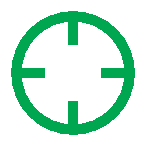The Moon and Saturn will share the same right ascension, with the Moon passing 21' to the north of Saturn. The Moon will be 6 days old.
At around the same time, the two objects will also make a close approach, technically called an appulse.
From South El Monte , the pair will become visible at around 19:49 (PST), 28° above your south-western horizon, as dusk fades to darkness. They will then sink towards the horizon, setting 3 hours and 17 minutes after the Sun at 22:36.
The Moon will be at mag -11.4, and Saturn at mag 0.4, both in the constellation Libra.
The pair will be close enough to fit within the field of view of a telescope, but will also be visible to the naked eye or through a pair of binoculars.
A graph of the angular separation between the Moon and Saturn around the time of closest approach is available here.
The positions of the two objects at the moment of conjunction will be as follows:
| Object | Right Ascension | Declination | Constellation | Magnitude | Angular Size |
| The Moon | 15h03m50s | 14°46'S | Libra | -11.4 | 30'46"1 |
| Saturn | 15h03m50s | 15°07'S | Libra | 0.4 | 16"2 |
The coordinates above are given in J2000.0. The pair will be at an angular separation of 69° from the Sun, which is in Leo at this time of year.
The sky on 22 Dec 2025
| The sky on 22 December 2025 | ||||||||||||||||||||||||||||||||||
|
9% 3 days old |
All times shown in PST.
|
|||||||||||||||||||||||||||||||||
Source
The circumstances of this event were computed using the DE430 planetary ephemeris published by the Jet Propulsion Laboratory (JPL).
This event was automatically generated by searching the ephemeris for planetary alignments which are of interest to amateur astronomers, and the text above was generated based on an estimate of your location.
Related news
| 20 Jul 2014 | – Saturn ends retrograde motion |
| 14 Mar 2015 | – Saturn enters retrograde motion |
| 22 May 2015 | – Saturn at opposition |
| 01 Aug 2015 | – Saturn ends retrograde motion |
Image credit
The Moon in conjunction with Venus and Jupiter, with the Very Large Telescope in the foreground. Image © Y. Beletsky, ESO, 2009.


